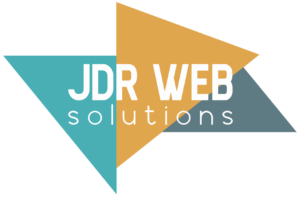Scaling a business is an exciting yet challenging phase. It’s when your systems, processes, and tools are put to the ultimate test. If not managed efficiently, growth can lead to chaos instead of success. That’s where SaaS (Software as a Service) solutions come in.
SaaS tools offer flexibility, scalability, and cost-efficiency, making them the perfect ally for businesses looking to scale seamlessly. In this ultimate guide, we’ll explore how SaaS can empower your business to grow, optimize operations, and stay competitive.
What Is SaaS and Why Is It a Game-Changer for Scaling?
SaaS refers to software delivered over the internet, eliminating the need for costly infrastructure or complex installations. Businesses can access tools via a subscription model, making SaaS both affordable and scalable.
Why SaaS Is Ideal for Scaling:
- Flexibility: Add or remove features based on your business needs.
- Cost-Efficiency: Pay only for what you use, reducing overhead costs.
- Automatic Updates: Stay ahead with the latest features and security without manual upgrades.
- Accessibility: Use SaaS tools anytime, anywhere, enabling remote work and collaboration.
Key Areas Where SaaS Helps Your Business Scale
1. Streamlining Operations
As your business grows, so does the complexity of your operations. SaaS tools can centralize and simplify processes, ensuring efficiency at every stage.
Examples of SaaS for Operations:
- Project Management: Tools like Asana, Trello, or Monday.com keep teams organized and projects on track.
- Inventory Management: Platforms like TradeGecko or Cin7 streamline stock tracking and order fulfillment.
- Accounting and Invoicing: QuickBooks or FreshBooks automate financial tasks, saving time and reducing errors.
2. Enhancing Collaboration
Scaling requires cohesive teamwork, especially across distributed teams. SaaS platforms foster collaboration by providing centralized hubs for communication and resource sharing.
Top Collaboration Tools:
- Communication: Slack, Microsoft Teams, or Zoom.
- File Sharing: Google Workspace or Dropbox for Business.
- Knowledge Management: Notion or Confluence for storing and sharing team knowledge.
3. Automating Repetitive Tasks
Manual processes can bottleneck growth. SaaS tools excel at automating repetitive tasks, freeing up your team to focus on strategic initiatives.
Examples of Automation SaaS:
- Marketing Automation: HubSpot, ActiveCampaign, or Mailchimp for email campaigns, lead nurturing, and analytics.
- Customer Relationship Management (CRM): Salesforce or Zoho CRM automate client management and sales tracking.
- Workflow Automation: Zapier or Make (formerly Integromat) connect different SaaS tools for seamless data sharing.
4. Scaling Customer Support
As your customer base grows, maintaining high-quality support is crucial. SaaS tools enable you to provide efficient, scalable customer service.
Customer Support SaaS Solutions:
- Live Chat: Intercom or Drift for real-time customer engagement.
- Help Desks: Zendesk or Freshdesk streamline ticket management.
- Chatbots: AI-driven tools like ChatGPT or Tidio provide instant responses and 24/7 availability.
5. Optimizing Sales and Marketing
To scale, you need consistent lead generation and conversion strategies. SaaS tools for sales and marketing help businesses reach larger audiences and close more deals.
Key SaaS Tools for Sales and Marketing:
- Analytics: Google Analytics or Hotjar to understand user behavior.
- Sales Enablement: Outreach or Pipedrive for pipeline management and forecasting.
- Social Media Management: Hootsuite or Buffer to schedule posts and track performance across platforms.
How to Choose the Right SaaS Tools for Scaling
With countless SaaS options available, selecting the right tools can feel overwhelming. Here’s how to make the right choice:
- Identify Pain Points: Focus on areas where you need the most support (e.g., operations, marketing, or customer support).
- Ensure Scalability: Choose platforms that can grow with your business without requiring frequent upgrades or replacements.
- Prioritize Integrations: Look for tools that integrate with your existing software to avoid silos.
- Test Before You Commit: Most SaaS platforms offer free trials or demos—use these to evaluate usability and fit.
- Consider Total Cost of Ownership: Evaluate subscription costs, potential add-ons, and ROI to ensure the solution aligns with your budget.
Overcoming Common SaaS Scaling Challenges
While SaaS is a powerful tool for scaling, it’s not without challenges. Here’s how to address common issues:
1. Overlapping Tools: Avoid redundancies by conducting regular SaaS audits to identify underused or duplicate tools.
2. Onboarding and Training: Ensure your team is fully trained to use the tools effectively. Many SaaS providers offer tutorials and support resources.
3. Data Security: Choose SaaS providers with robust security protocols, such as data encryption and compliance with GDPR or CCPA.
The ROI of Scaling With SaaS
Investing in SaaS solutions offers measurable returns, including:
- Increased Efficiency: Automating processes saves time and reduces errors.
- Better Decision-Making: Data-driven insights help businesses strategize more effectively.
- Improved Customer Experience: Scalable support systems keep customers happy, boosting retention rates.
- Cost Savings: The subscription model eliminates the need for expensive infrastructure and IT teams.
Conclusion
Scaling a business doesn’t have to be overwhelming. With the right SaaS solutions, you can streamline operations, enhance collaboration, and deliver exceptional customer experiences—all while keeping costs under control.
At JDR Web, we specialize in integrating SaaS solutions that empower businesses to grow with confidence. From automation to analytics, we’ll help you leverage the right tools for every stage of your journey.
Ready to scale smarter? Contact us today to learn how SaaS can transform your business.
Final Thoughts
The key to successful scaling lies in preparation and smart investments. SaaS solutions offer the flexibility, efficiency, and innovation needed to thrive in a competitive market. Start integrating these tools today, and watch your business reach new heights!




